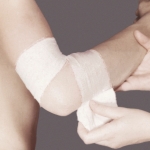Desmurgy
 Carrying out dressings
Carrying out dressings
 Consider how dressings are carried out according to approved standards.
Consider how dressings are carried out according to approved standards.
The first stage is preparatory
- The dressing room is being prepared for work: wet cleaning and bactericidal irradiation are carried out. Read completely "
 creeping bandage
creeping bandage

A serpentine or creeping bandage is applied to hold the dressing over the entire surface of the limb.
 Turtle headband
Turtle headband
The tortoise headband is a variant of the figure-of-eight headband . As a rule, it is superimposed on the area of large joints.
The tortoise bandage is bandage tours that intersect on the flexor surface of the joint and fan out on the extensor surface.
 Return bandage
Return bandage
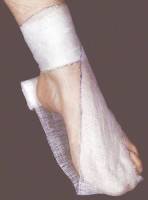
The returning bandage is reduced to the alternation of circular tours of the bandage with longitudinal ones, going sequentially and returning back until the affected area is completely closed.
A returning bandage is used when bandaging the foot, hand, fingers and stumps of the limbs. It allows you to close the end surface.
 cruciform bandage
cruciform bandage
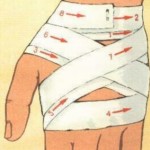
The eight-shaped (8-shaped), or cruciform bandage resembles a cross or the number 8 in shape. Bandage tours are repeated several times, the cross is located above the affected area.
A cruciform bandage is applied to areas of the body of complex configuration - the back surface of the hand, chest, occiput, or areas with mobility (limb joints). Read completely "
 spiral bandage
spiral bandage
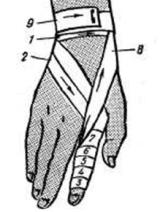
The spiral bandage begins with circular tours of the bandage. Next, the bandage is carried out from the periphery to the center, half or 2/3 overlapping the previous tours - as a result, a spiral is formed.
A spiral bandage is used for wounds of the chest, abdomen, limbs. Sometimes covering a significant part of the body, such a bandage exerts uniform pressure on the damaged part of the body.
 Spike bandage
Spike bandage
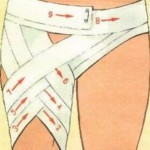
When bandaging the shoulder, forearm, thigh, torso, fingers, a spike-shaped ascending or descending bandage
The crossover of the bandage moves occurs at 2/3 of its width, covering its previous rounds, along one line. The cross is carried out along one line: up - with an ascending spike-shaped bandage, down - with a descending one. Read completely "
 Bandage circular
Bandage circular
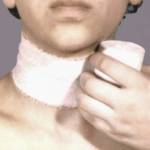
To start and end bandaging, a circular or circular bandage is used. Bandage tours go from left to right and cover each other completely in the form of rings.
At the beginning of the bandage, the first round (move) is sometimes given an oblique direction by bending the edge of the bandage. Then the first move is closed by the second.
 Types of bandages
Types of bandages
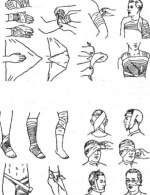 There are the following types of bandage dressings according to the method of application:
There are the following types of bandage dressings according to the method of application:
- circular (circular);
- spike-shaped;
- spiral (ascending and descending);
- cruciform (8-shaped);
- returning;
- tortoiseshell (converging and diverging);
- creeping (serpentine).
Bandage dressings are soft (along with adhesive, adhesive and kerchief). They are the most comfortable and popular.
 Applying bandages. Basic Rules
Applying bandages. Basic Rules
 Each imposition of bandage bandages occurs according to certain rules.
Each imposition of bandage bandages occurs according to certain rules.
Bandages must be taken of the appropriate width. For bandaging:
- heads - bandages 6-8 cm wide are used;
- torso - 10-12 cm;
- hands, feet, fingers - 4-6 cm read more »
 Bandage Deso video
Bandage Deso video
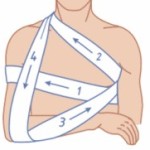
Optimal immobilization of the shoulder in case of fractures of the clavicle and humerus Deso bandage bandage, in some cases - plaster.
Before applying the bandage, the armpit is examined. Hygienic treatment of this area is carried out, followed by powdering with talc. To absorb sweat and more comfortable position of the body "under the arm" a cotton-gauze roller is inserted.
